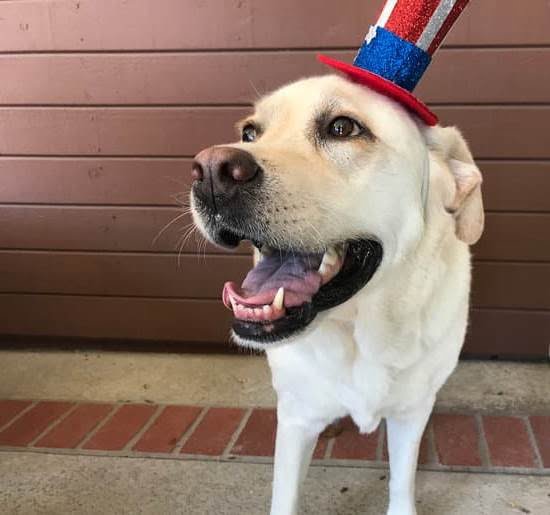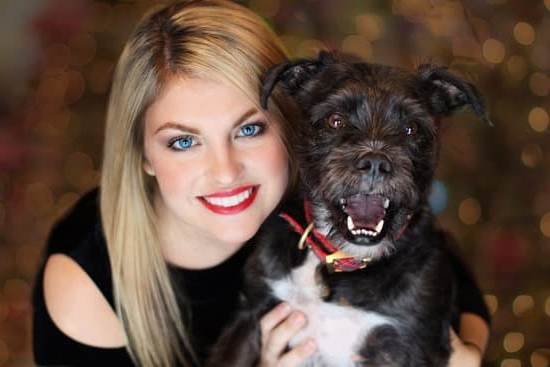Are you wondering how to crate train an older dog? Crate training can be incredibly beneficial for older dogs, providing a safe and comfortable space for them to relax and feel secure. This article will take you through the process of crate training an older dog, from assessing their behavior and choosing the right crate to addressing common challenges and establishing a routine.
As your dog ages, they may experience changes in behavior or develop separation anxiety, making crate training a valuable tool for helping them adjust. Understanding the benefits of crate training for older dogs is important in providing them with the support and care they need during this stage of life.
In this comprehensive guide, we will walk you through each step of the crate training process, offering tips and solutions for addressing any challenges that may arise. Whether your older dog is new to crate training or has had previous experience with it, this article will equip you with the knowledge and tools necessary to successfully train your older dog to enjoy their crate.
With patience and consistency, you can create a positive and comforting environment for your beloved older canine companion.
Assessing Your Older Dog’s Behavior and Temperament
When it comes to crate training an older dog, it is important to first assess their behavior and temperament. This step is crucial in determining the best approach to crate training for your furry friend. One key aspect to consider is whether your older dog has had previous experience with crate training, as this can greatly influence their receptiveness to the process.
Start by observing how your older dog responds to confinement or being in a small space. Some dogs may have a more anxious or restless demeanor when confined, while others may feel secure and comfortable in a crate. Additionally, take note of any signs of separation anxiety or fear that your older dog may exhibit, as this can impact their ability to adjust to crate training.
It’s also important to consider any existing health conditions or mobility issues that may affect your older dog’s comfort in a crate. For example, if your dog suffers from arthritis or joint pain, you’ll want to ensure that the chosen crate provides enough space for them to move around comfortably and access water and food without difficulty.
In assessing your older dog’s behavior and temperament, it’s essential to approach the process with patience and understanding. Remember that every dog is unique and will respond differently to crate training based on their individual personality and history. By taking the time to evaluate these factors, you can tailor the crate training process to best suit your older dog’s needs.
| Behavior | Temperament |
|---|---|
| Response to confinement | Anxious or relaxed demeanor |
| Signs of separation anxiety or fear | Existing health conditions/mobility issues |
Choosing the Right Crate for Your Older Dog
When it comes to crate training an older dog, choosing the right crate is crucial for their comfort and success in training. There are a few key factors to consider when selecting a crate for your older dog. First, you’ll want to ensure that the crate is large enough for your dog to stand up, turn around, and lie down comfortably. This is especially important for older dogs who may have arthritis or other joint issues.
Additionally, consider the material of the crate. For older dogs, a sturdy, durable crate is essential to prevent any accidents or injuries. Wire crates are often a great option as they provide visibility and ventilation, while still being secure. Alternatively, plastic crates can provide a den-like environment that may make your older dog feel more secure.
It’s also important to take into account your older dog’s specific needs and preferences when choosing a crate. Some dogs may prefer a covered crate that provides seclusion and privacy, while others may do better with an open-wire design that allows them to see what’s going on around them. By considering your dog’s individual needs and temperament, you can choose a crate that will be most conducive to their comfort and success in crate training.
Finally, don’t forget to consider portability and ease of cleaning when selecting a crate for your older dog. Whether you plan on using the crate at home or for travel, it should be easy to transport and clean to ensure both yours and your dog’s convenience. By taking all these factors into account, you can choose the right crate that will set your older dog up for successful training outcomes.
Introducing Your Older Dog to the Crate
When it comes to crate training an older dog, it’s important to take a gradual and patient approach. The first step is to familiarize your older dog with the crate by leaving the door open and allowing them to explore it at their own pace. You can do this by placing treats, toys, or comfortable bedding inside the crate to make it a welcoming space for your dog.
Once your older dog is comfortable entering and exiting the crate freely, you can start feeding them their meals inside the crate to create positive associations. This will help your dog view the crate as a safe and enjoyable space rather than a place of confinement. It’s important to praise and reward your older dog whenever they willingly enter the crate on their own accord.
After your older dog has become accustomed to eating in the crate without any signs of distress, you can gradually start closing the door for short periods while remaining in sight. Over time, you can increase the duration that the door is closed, always making sure to let your dog out before they become anxious or uncomfortable. This process will help your older dog get used to being confined in the crate without feeling stressed or anxious.
| Step | Description |
|---|---|
| Familiarize Your Dog with Crate | Leave door open and allow exploration with treats/toys |
| Feeding Meals in Crate | Create positive associations by feeding meals inside crate |
| Gradually Close Door | Close door for short periods while remaining in sight |
Addressing Separation Anxiety and Fear in Older Dogs During Crate Training
Separation anxiety and fear are common issues that older dogs may experience during crate training. It is important to address these challenges with patience and understanding in order to create a positive and comfortable environment for your older dog.
Recognizing Signs of Separation Anxiety and Fear
Before addressing separation anxiety and fear in older dogs, it is crucial to recognize the signs of these issues. Some common signs of separation anxiety include excessive barking or howling, destructive behavior, pacing, and attempts to escape the crate. On the other hand, fear can manifest as trembling, cowering, or refusing to enter the crate. By observing your older dog’s behavior, you can better understand their specific anxieties and fears.
Gradual Desensitization
One effective approach to addressing separation anxiety and fear during crate training is through gradual desensitization. This involves slowly acclimating your older dog to being alone in the crate for short periods of time. Start by leaving your dog in the crate for just a few minutes while you remain nearby, gradually increasing the duration as your dog becomes more comfortable. This method helps to build your dog’s confidence and trust in the crate.
Creating a Comforting Environment
To alleviate separation anxiety and fear, it’s important to create a comforting environment within the crate. Place familiar bedding, toys, and treats inside the crate to make it feel like a safe space for your older dog. Additionally, consider using pheromone diffusers or calming sprays designed specifically for reducing stress in dogs. These products can help relax your older dog and ease their anxieties while in the crate.
By taking proactive steps to address separation anxiety and fear during crate training, you can help your older dog feel more at ease with this new experience.
Establishing a Crate Routine and Schedule for Older Dogs
Once you have successfully introduced your older dog to the crate and they have become comfortable with it, it is important to establish a routine and schedule for their crate time. This will help your older dog understand when it’s time to relax in their crate and when they will have opportunities to stretch, play, or go for a walk. Here are some steps to establish a crate routine and schedule for your older dog:
- Start by feeding your older dog their meals in the crate. This will create positive associations with the crate and make them more willing to spend time in it.
- Set specific times for when your older dog will be crated, such as during bedtime or when you’re away from home. Consistency is key to helping them adjust to the routine.
- During crate time, provide your older dog with comforting items such as toys, blankets, or a piece of clothing with your scent. This can help reduce anxiety and make them feel secure.
It’s important to remember that while establishing a routine is beneficial, flexibility is also important. Older dogs may have different needs compared to younger ones, so be observant of how they respond to the crate routine and make adjustments as needed.
Ultimately, the goal of establishing a crate routine and schedule for older dogs is to provide them with a sense of security and comfort while maintaining a balanced lifestyle. By creating a positive association with the crate through structure and consistency, you can help your older dog feel at ease with their new living arrangement. By following these steps, you can maintain an effective crate routine that benefits both you and your older canine companion.
Common Challenges and Solutions in Crate Training Older Dogs
Crate training an older dog can come with its own set of challenges, but there are effective solutions to address these issues. Whether your older dog is new to crate training or has had negative experiences in the past, it’s important to approach the process with patience and understanding. Here are some common challenges that may arise when crate training an older dog and how to tackle them:
1. Resistance to the Crate: Some older dogs may be resistant to entering the crate, especially if they have never been introduced to one before. To overcome this challenge, gradually introduce your dog to the crate by making it a positive and rewarding experience. Place treats, toys, and familiar scents inside the crate to entice your dog to explore it on their own.
2. Whining or Barking: Older dogs may express their discomfort or anxiety about being in the crate through whining or barking behavior. It’s essential not to give in to their demands by letting them out immediately, as this reinforces the negative behavior. Instead, wait for a lull in their vocalizations before calmly opening the crate door and praising them for being quiet.
3. Accidents Inside the Crate: If your older dog has accidents inside the crate, it could be due to underlying health issues or anxiety-related behaviors. Address any potential medical concerns with your veterinarian and consider adjusting feeding and potty schedules to minimize accidents. Additionally, make sure the crate is appropriately sized for your dog – too much space may encourage soiling habits.
4. Fear of Being Confined: Some older dogs may exhibit fear or anxiety about being confined in a small space, especially if they have had negative experiences with confinement in the past. To help alleviate their fears, gradually acclimate your dog to spending short periods of time in the crate while offering positive reinforcement and reassurance.
By understanding these common challenges and implementing effective solutions, you can help your older dog successfully adjust to crate training in a safe and comfortable manner.
Gradual Transition to Leaving Your Older Dog Alone in the Crate
Recognizing Signs of Readiness
Before you start leaving your older dog alone in the crate, it’s important to recognize the signs that indicate they are ready for this transition. These signs may include a calm demeanor when in the crate, no signs of distress or anxiety, and being able to stay in the crate for longer periods without showing signs of discomfort. It’s crucial to pay attention to your dog’s behavior and adjust the transition based on their progress.
Start With Short Periods
When you feel that your older dog is ready, start by leaving them alone in the crate for short periods of time. Begin with just a few minutes and gradually increase the duration as your dog becomes more comfortable. Make sure to provide plenty of mental stimulation and physical exercise before leaving them alone in the crate to reduce any potential anxiety.
Use Positive Reinforcement
During this transition phase, continue using positive reinforcement techniques such as treats and praise to encourage your older dog to feel comfortable in the crate even when alone. This will help create positive associations with being in the crate and make the process smoother for your dog. Remember that every dog is different, so be patient and adjust the pace of the transition based on your dog’s individual needs and progress.
By following these guidelines, you can gradually transition your older dog to being left alone in the crate with minimal stress or anxiety. With patience, consistency, and understanding of your dog’s needs, they will eventually be able to spend extended periods comfortably and confidently in their crate.
Understanding the Importance of Patience and Consistency in Crate Training Older Dogs
In conclusion, crate training an older dog can be a rewarding experience for both the pet and the owner. While it may take time and effort, the benefits of crate training are well worth it. By understanding your older dog’s behavior and temperament, choosing the right crate, and following a step-by-step guide to introducing them to the crate, you can help them feel safe and secure in their new space.
One of the most important aspects of crate training an older dog is addressing separation anxiety and fear. This can be a challenging process, but with patience and consistency, you can help your older dog overcome these issues. Establishing a routine and schedule for crate time can also provide structure and comfort for your pet.
It’s essential to remember that every older dog is unique, so there may be common challenges along the way. However, with gradual transition to leaving your older dog alone in the crate, and by being patient and consistent in your training approach, you can help them adjust successfully. Overall, with dedication and understanding of how to crate train an older dog, you can create a positive environment for your furry companion.
Frequently Asked Questions
Can a Dog Be Too Old to Crate Train?
A dog is never too old to be crate trained, although it may take longer for an older dog to adjust to the crate. It’s important to be patient and consistent in the training process.
What Is the Fastest Way to Crate Train an Older Dog?
The fastest way to crate train an older dog is to make the crate a comfortable and inviting space by using treats, toys, and positive reinforcement. Avoid forcing the dog into the crate or using it as a punishment.
How Do You Crate Train an Adult Dog at Night?
When crate training an adult dog at night, it’s essential to establish a bedtime routine that includes plenty of exercise and a bathroom break before going into the crate. Keep the crate in your bedroom so your presence can help reassure the dog during the adjustment period.

Welcome to the blog! I am a professional dog trainer and have been working with dogs for many years. In this blog, I will be discussing various topics related to dog training, including tips, tricks, and advice. I hope you find this information helpful and informative. Thanks for reading!





